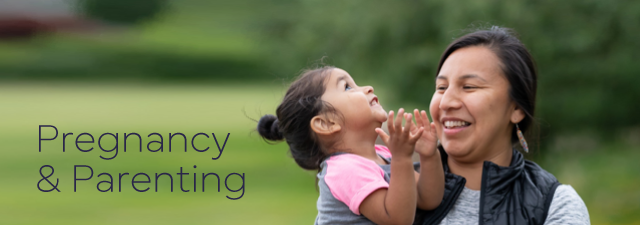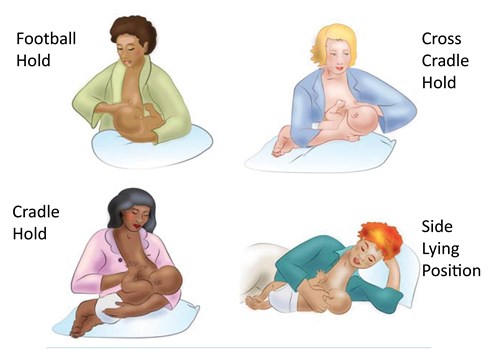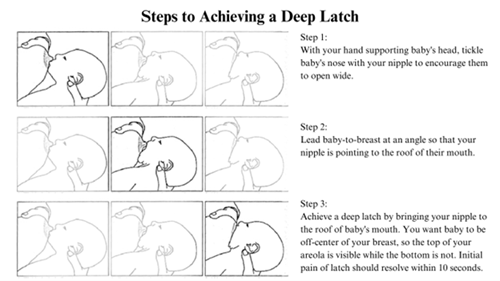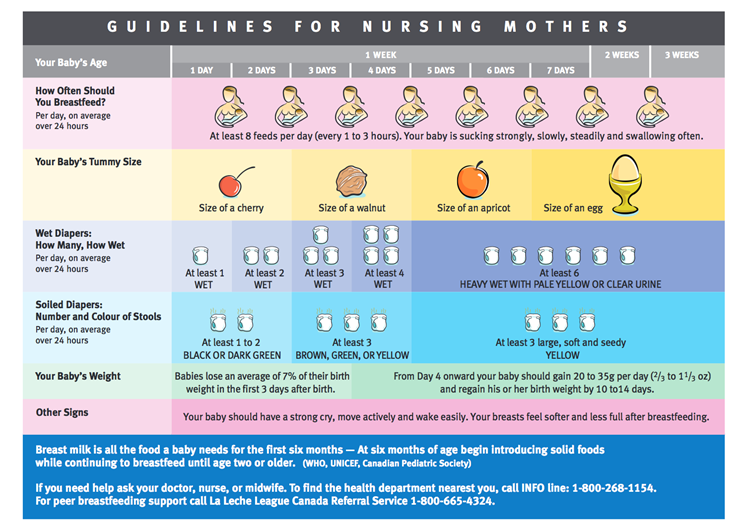Algoma Public Health
Breastfeeding
How you choose to feed your baby is one of the most important decisions you will make a as parent. Breastmilk is the natural food for newborns. It contains everything your baby needs.
The Public Health Agency of Canada, the Dietitians of Canada, the Canadian Pediatric Society and the College of Family Physicians of Canada agree:
- Babies need only breastmilk for the first 6 months.
- At about 6 months babies need to eat solid foods and continue to breastfeed for up to 2 years and beyond. Start solid foods that are nutritious, especially foods that are high in iron.
Do you need help breastfeeding – or just have questions?
- Check our breastfeeding FAQ's
- Speak to a Public Health nurse over the phone or in person by calling to book an appointment into our feeding clinic
- View a great resource called Breastfeeding Matters from the Best Start Nexus
Getting Started
You can help your baby learn to breastfeed by using these skills right from the start:
- Holding your baby skin-to-skin
- Proper position and latch
- Following your baby's cues
- Learning how to hand express colostrum.
Holding Your Baby Skin-to-Skin

Skin-to-skin is a way of holding your baby that both babies and parents find enjoyable. The baby wears only a diaper and is held in an upright position on the parent's bare chest. A light blanket can be draped across the baby's back. When babies are held skin-to-skin, they can hear their parent's heartbeat, breathing, smell, feel their skin. This is familiar and comforting to babies.
- Stabilizes your baby's heart rate, breathing and blood sugar
- Keeps your baby warm though your body heat
- Promotes bonding and getting to know your baby
- Helps your baby to be calm and cry less
- Helps you to be more confident and relaxed
- Helps your milk flow and may improve your milk supply
- Promotes a good latch. This means that you are less likely to develop sore nipples and your baby will get more milk
Hold your baby skin-to-skin as soon as possible after giving birth. Hold your baby skin-to-skin for an hour or more, as long as you wish. As your baby grows, continue holding your baby skin-to-skin often for long periods. Premature babies benefit from this, too. Sometimes this is called Kangaroo Care. Your partner, or another person you are close to, can also provide skin-to-skin care to comfort and nurture your baby from time to time. When you are about to feed your baby make sure you and your baby are in a position that makes it easy to breastfeed. Parents and babies can breastfeed in many different positions.
Following your baby's cues
Early signs of hunger include:
- Mouthing (hand movements to the mouth and sucking on fists)
- Licking lips, sucking motions or sounds
- Rooting (opening the mouth, searching to suck and sucking on contact)
- Opening eyes wider than usual
- Restlessness or moving arms and legs
Early signs of fullness include:
- Sucking actions will slow down
- Losing interest or letting go of the nipple
- Rooting will stop
- Turning head away
Hand Expression
Hand expressing colostrum or breastmilk is important because it helps you to:
- Express a few drops of milk to get baby interested in latching.
- Gently rub a few drops of milk into your nipples to prevent soreness.
- Soften your breasts near your nipples before latching your baby, if they are very full.
- Make your breasts comfortable if they are full and your baby is not feeding.
- Express milk for your baby if you are going to be away from her or need to feed her other than directly at the breast.
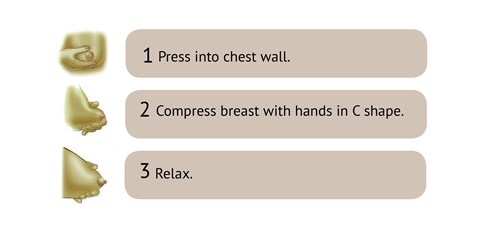
View a more detailed video of hand expression.
Why Breastfeed?
- Breastfeeding is free
- Breastfeeding promotes bonding between you and your baby
- Breastmilk is convenient, always the right temperature and available anytime
- Breastfeeding is environmentally friendly
- Breastfeeding reduces health care costs for your family
Benefits of breastfeeding for your baby:
- Protects your baby from many infections and illnesses
- Builds healthy eating habits
- Promotes proper jaw development
- Promotes healthy brain development
Benefits of breastfeeding for breastfeeding parent:
- Controls postpartum bleeding
- Helps you lose the weight you gained during pregnancy more quickly
- Delays the return of your period
Last Modified: May, 2023



